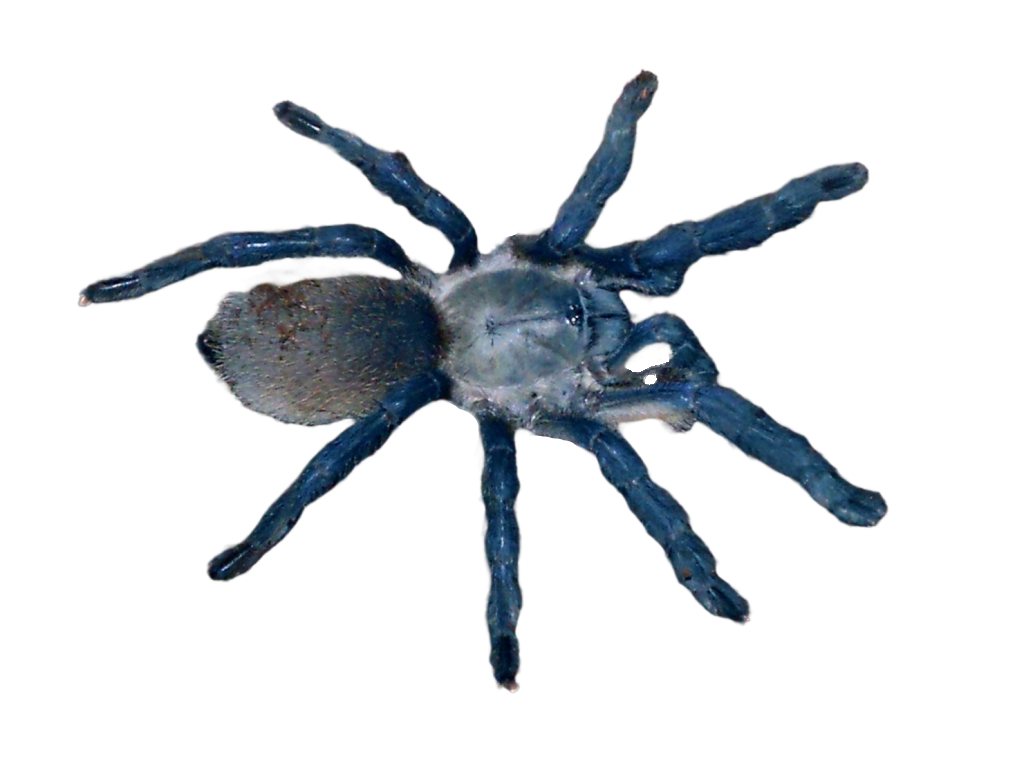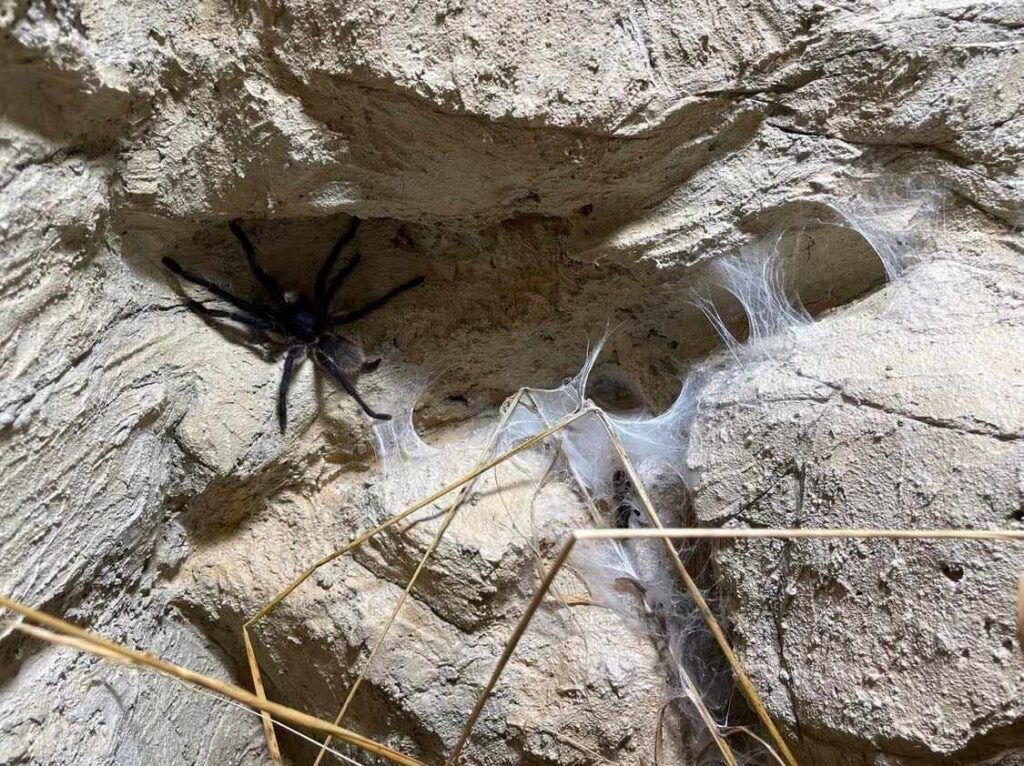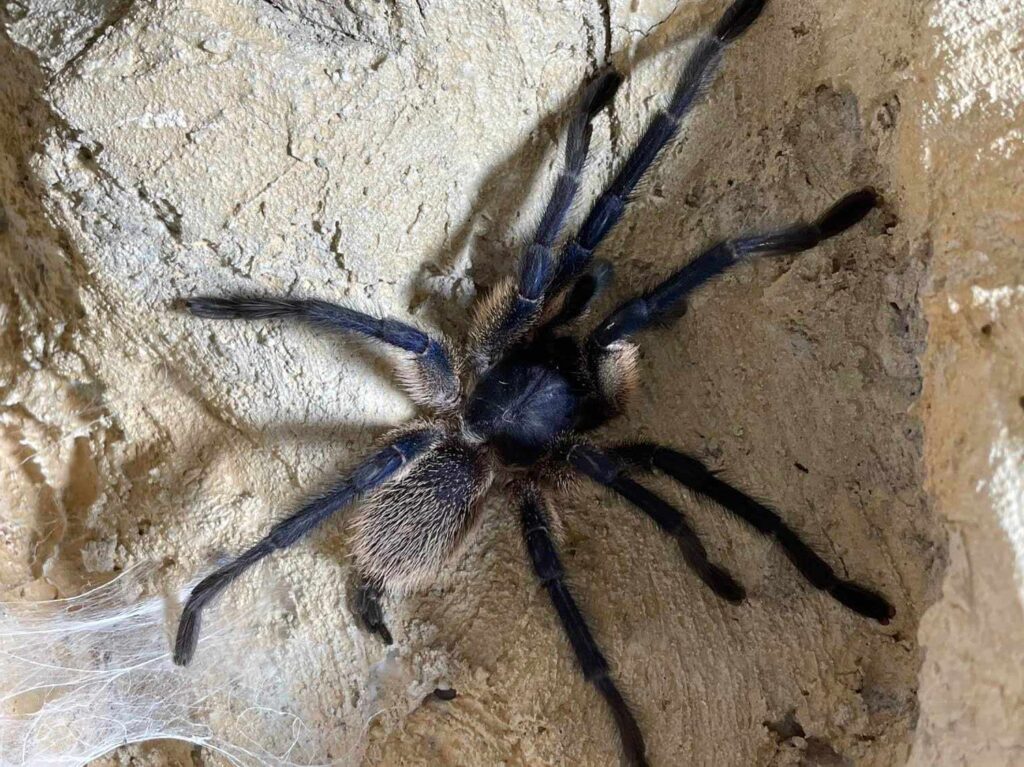Socotra Island Blue Baboon Tarantula
Monocentropus balfouri

Lives in colonies and spins tunnels
The Socotra Island blue baboon tarantula is a member of the tarantula family, and it is fantastic at spinning webs. The species likes to form colonies, where they live close together in burrows and caves, both built in the ground and above ground of silk threads. Living in a colony is very unusual for tarantulas, which like to live alone or in pairs, and they do not hesitate to fight if someone else comes close. Blue baboon tarantulas do not spin typical spider webs, but instead dense webs, tunnels, caves and cocoons. When they catch prey, they like to wrap the prey in their own silk.
Once a female and a male have mated, the female weaves an egg cocoon for her eggs. After hatching, she takes care of the young for up to six months, providing food and shelter in a silk cave she built herself – to protect them from danger.

Photo: Ellika-Nordström-Malmö-Museum
Showing their fangs
The blue baboon tarantula is endemic to a small island called Socotra, off the coast of Yemen. Endemic means that the species is only found in a single location – often an island – but it can also be a lake, a mountainous area, or in a one country only. The tarantula is rarely aggressive, but if disturbed, it may stand on its hind legs, lift up its front legs, and show its fangs. All tarantulas are venomous, and so is the blue baboon tarantula. The bite is not fatal to a human, but very painful.

Photo: Ellika-Nordström-Malmö-Museum
Distribution worldwide
The island of Socotra, off the coast of Yemen.

Threat based on the Red List

Trade regulations
CITES: Not listed.